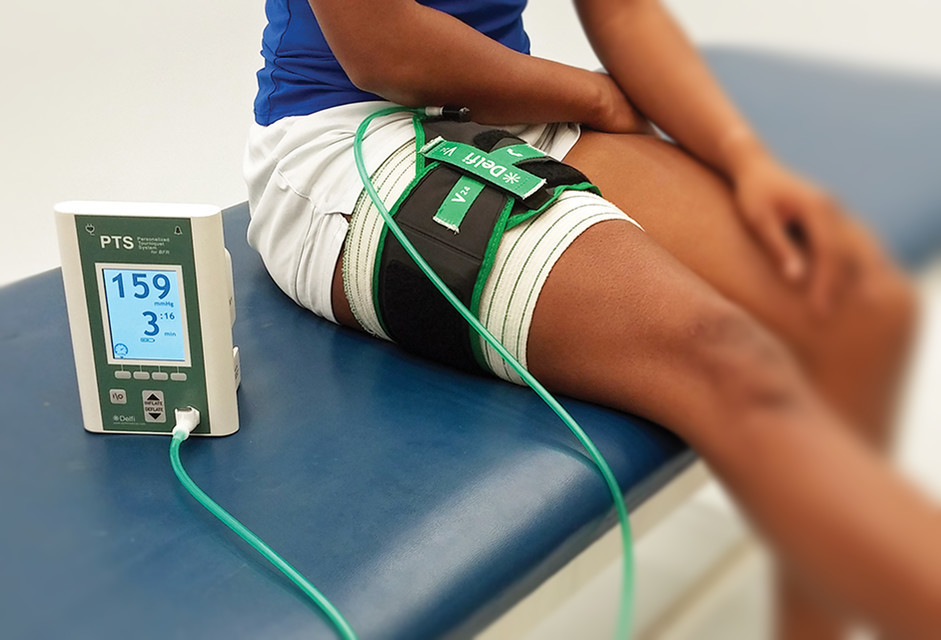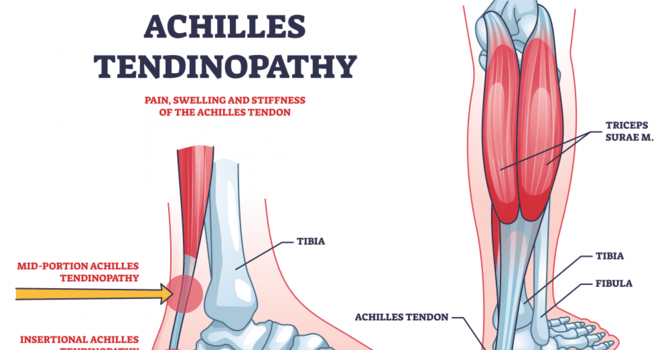
Heard of blood flow restriction training but not sure what it actually does — or if it’s safe?
You're not alone. This innovative training method might look intimidating, but it’s both highly effective and adaptable to different fitness or rehab levels. Let’s break down what it is, how it works, and why more people are using it for strength, recovery, and rehabilitation.
What Is Blood Flow Restriction Training?
Blood Flow Restriction (BFR) training is a specialized technique that uses a cuff or band to partially restrict blood flow (30-80%) to the arms or legs during low-load resistance exercise. This restriction reduces venous return while maintaining arterial inflow, creating a low-oxygen (hypoxic) environment in the working muscles. As a result, muscles fatigue faster—triggering strength and growth responses similar to lifting heavier weights.
Originally developed in Japan in the 1960s as "Kaatsu training," BFR has since gained popularity among physical therapists, athletes, and individuals recovering from injury for its ability to improve muscle strength and size with minimal joint stress.
How Does BFR Work?
BFR training uses a pneumatic cuff to safely restrict blood flow from leaving the working muscles. This limited oxygen environment causes the muscles to fatigue quickly—stimulating a powerful training effect even when using just 20–30% of your one-repetition maximum (1RM).
The brain and body perceive the exercise as more intense than it is, triggering hormonal and cellular responses associated with high-intensity training, including increases in growth hormone, muscle protein synthesis, and overall strength adaptations.
Benefits of BFR Training
- Build Muscle with Light Weights- BFR allows you to achieve muscle growth using very light loads—ideal for injury rehab, early post-surgical phases, or reducing joint strain.
- Joint-Friendly Strength Training- Using lower weights decreases mechanical stress on joints and tendons, making BFR a safe option for individuals with arthritis, joint pain, or healing tissue.
- Accelerated Recovery and Rehab- BFR can limit muscle loss during immobilization, support faster healing after injury or surgery, and aid in regaining strength more quickly.
- Improved Endurance and Cardiovascular Fitness- Research suggests BFR can enhance aerobic capacity and vascular function, making it useful for runners, older adults, and those seeking low-impact conditioning.
- Potential Bone Health Benefits- By increasing metabolic stress and load signaling, BFR may help stimulate bone remodeling and support bone density—an added benefit for aging adults.
Combining BFR with Traditional Strength Training
BFR is best used as a supplement—not a replacement—for high-load resistance training. Traditional heavy lifting is essential for building neural strength and tendon integrity, while BFR adds a safe, metabolic boost. Together, they offer a comprehensive approach to strength and performance.
Who Can Benefit from BFR Training?
- Rehabilitation Clients: Recovering from injury or surgery? BFR helps build strength without compromising healing structures.
- Athletes and Active Adults: Runners, golfers, and weekend warriors can use BFR to enhance performance while reducing training stress.
- Older Adults or Those with Joint Pain: Maintain muscle and bone strength while minimizing discomfort from heavy lifting.
- Anyone Seeking Recovery and Growth: A great tool for cross-training, active recovery days, or muscle stimulation during deload phases.
Patient Success Story
I’ve seen BFR training make a powerful difference early after surgeries like ACL reconstruction by helping to prevent muscle loss when heavier loading isn’t safe. This early strength preservation lays the foundation for faster, more effective rehab down the line.
For aging clients experiencing joint pain in areas like the knees or hips, BFR provides a way to build strength and muscle with lighter loads—reducing discomfort while still promoting gains that support long-term health, mobility, and independence.
When BFR May Not Be Appropriate
Though safe for most people when guided by a professional, BFR is not recommended for those with:
- History of deep vein thrombosis (DVT), stroke, or clotting disorders
- Poorly controlled hypertension (>140 mmHg)
- Peripheral vascular disease
- Active infection or cancer
- Renal disease or pregnancy
- Medical intolerance to compression
Always consult with your healthcare provider before starting BFR.
BFR at Won Life Physical Therapy and Wellness
At Won Life Physical Therapy and Wellness, we use BFR as one of many tools to help you feel stronger, recover faster, and stay active for life. Whether you're working through an injury or looking to get more from your training, we’ll help you decide if BFR is right for your goals.
Curious About BFR?
Let’s Talk. Ready to find out if BFR training can help you move better and live stronger?
Reach out for a free phone consultation.
(831) 320-0634
Serving the Monterey Peninsula
www.wonlifeptandwellness.com
References:
-
Loenneke, J. P., Wilson, J. M., Wilson, G. J., Pujol, T. J., & Bemben, M. G. (2012). The physiological mechanisms of blood flow restriction training. Journal of Applied Physiology, 112(10), 1522–1528. https://doi.org/10.1152/japplphysiol.00334.2011
-
Hughes, L., Paton, B., Rosenblatt, B., Gissane, C., & Patterson, S. D. (2017). Blood flow restriction training in clinical musculoskeletal rehabilitation: a systematic review and meta-analysis. British Journal of Sports Medicine, 51(13), 1003–1011. https://bjsm.bmj.com/content/51/13/1003
-
American College of Sports Medicine (ACSM). (2020). Blood Flow Restriction Training: Helpful or Harmful? ACSM Certified Blog. https://www.acsm.org/blog-detail/acsm-certified-blog/2020/11/16/blood-flow-restriction-training-helpful-or-harmful
- Lorenz, D. (2021). Blood Flow Restriction: Cause for Optimism, But Let’s Not Abandon the Fundamentals. International Journal of Sports Physical Therapy, 16(3), 937–939. Retrieved from https://ijspt.scholasticahq.com/article/23725-blood-flow-restriction-cause-for-optimism-but-let-s-not-abandon-the-fundamentals





